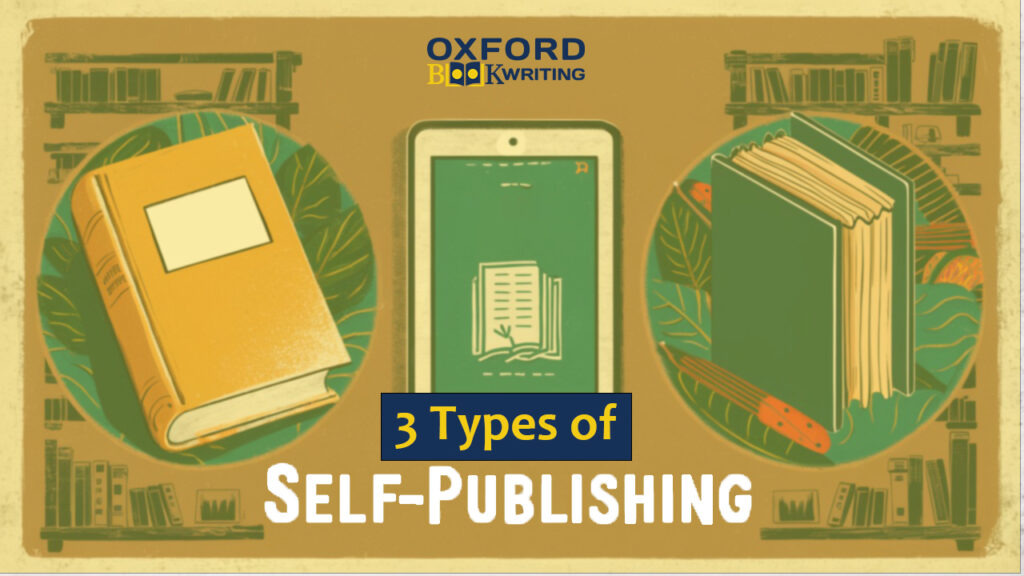Most authors go with the self-publishing route since self-publishing has become a possibility. Why do they do so? That’s because self-publishing is the only possibility for many authors who want to share their insights but are snubbed by big names in the publishing industry because they either have no experience or their manuscripts don’t meet the publishing criteria put forth by these giants.
Amazon is the major player in the self-publishing industry followed by Lulu, Apple Books, Smashwords, and similar platforms. These publishing sites allow the author to maintain complete control over their books, presentation, and marketing. They can keep the costs down by choosing the low-cost publishing option of print on demand. Moreover, these platforms don’t exercise quality criteria for accepting or rejecting books.
Many novice and aspiring writers believe that these sites are their only self-publishing options. This assumption is completely false. You will be amazed to know that many traditional-looking publishing houses also offer self-publishing services. Here are different types of self-publishing solutions available in the market. Moreover, this blog post will also discuss the pros and cons of every solution.
Traditional Publishing
Traditional publishing is not a self-publishing solution, but it earns an honorable mention in the list of publishing options because of its notoriety and influence. Publishing companies mostly take manuscripts from published authors or they take extremely promising pieces.
Unlike self-publishing, traditional publishing only requires the writer to give his manuscript. They don’t have to invest in book editing services, publishing costs, and marketing efforts. On the contrary, this publishing method pays writers for their hard work upfront. This upfront payment is an advance on the book royalties they are expected to receive from their book.
Traditional publishing promises greater exposure and increased visibility, and authors who get the chance to publish their work through traditional publishers consider themselves lucky. However, it’s also a fact that these publishers don’t pay a lot for a writer’s idea and hard work. Most contracts dictate between 6 and 12% of royalties on books as compared to up to 70% of royalties paid by some renowned self-publishing platforms.
Option # 1: Hybrid Publishing
Hybrid publishing is a common self-publishing solution that is adopted by those writers who aren’t afraid of spending money on their dream book. The author has to pay for all the services out of his pocket. Many hybrid publishers want to see a promising manuscript and they can lower their publishing fees in exchange for a cut from book royalties.
You will find two different types of hybrid publishers. The first ones are those who will accept any book and will charge a fee for turning it from a manuscript to a paperback or hardcover book. They will charge you heavy rates for editing, formatting, cover, publishing, and marketing. You can choose some services and get other services from another publisher or contractor. The same publishers also offer to lower the costs if the author promises to buy a specified number of copies from the publisher.
The second type of publisher will go after the quality and marketability of the manuscript. Only when they find the idea promising would they agree to spend on it. The rates charged by these publishers are low. They offer lower flexibility in designing and marketing efforts. Although the author has to compromise on flexibility, they benefit from increased concern for quality from the expert publishers. The published will tackle editing, formatting, designing, and publishing to perfection, and ensure that your book receives well-deserved exposure.
Option # 2: Shared Publishers
The third type of publisher only takes a series of books. So, if you plan on writing a trilogy, contact these publishers. Again, you have to bear all the costs of editing, designing, publishing, and marketing. Many authors prefer these services over others because usually, these publishers agree to a higher royalty sharing rate. You can look at a 50% cut from your book royalties through this solution.
Most of these publishers go for published authors and are picky about the content they publish. You will have to search deeply to find a publisher that matches your needs and is happy to help you get published after seeing your idea.
Option # 3: Complete Self-Publishing Model
This is the last type of publishing solution where you don’t share your book royalties with any publisher because you have accomplished the task all by yourself. You will be using this model even if you deploy professional services from ghostwriters, book editors, cover designers, or book marketers. As long as you get these services without exchanging a portion of your book royalties as compensation. Bear in mind that you must also have to pay for the printing and distribution of your book to the right stores or locations.
Flexibility is the most important feature of this type of publishing. However, writers must commit to lots of effort and bits and pieces of different expenses if they have to go with this option. The worst compromise in this solution is made on marketing. A self-publishing author must understand that he/ she is solely responsible for the book’s sales and success.
Most authors can overcome the lack of marketing support easily, while others suffer. If you choose a complete self-publishing model, you need to analyze your marketing strengths first. However, if you find that you aren’t good at it, you can always fall back on professional book marketing services to help you sell your book.
Wrapping Up
Contrary to speculations, the book publishing industry hasn’t responded poorly to the advancement of technology. Sure, many readers have chosen eBooks over paperbacks, but many remain committed to their former joy of life. At the same time, the number of authors choosing the self-publishing model has grown tremendously. This blog post unearths types of self-publishing solutions available to authors these days.



